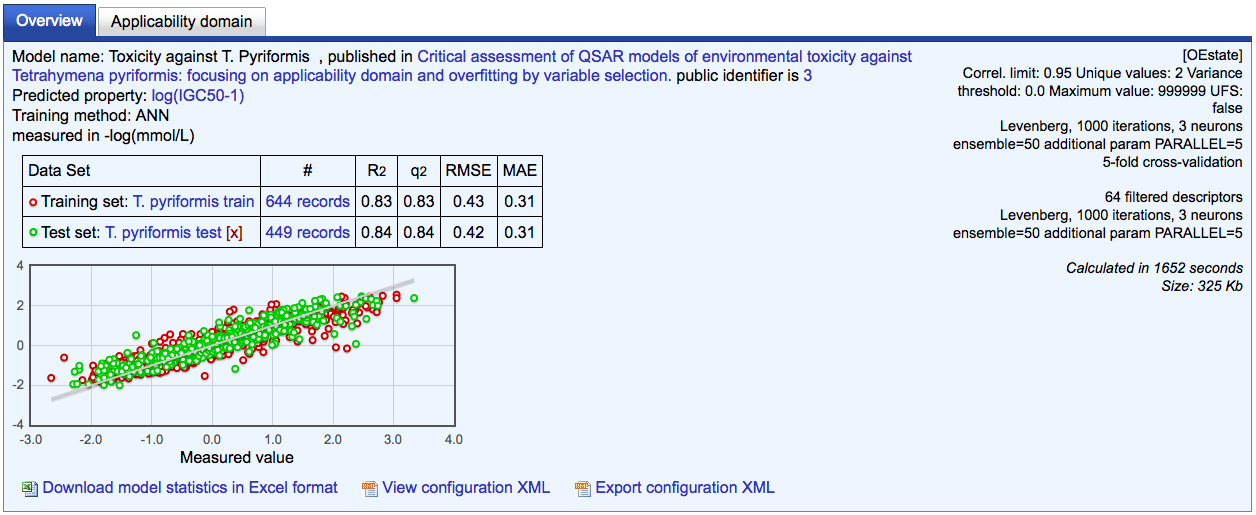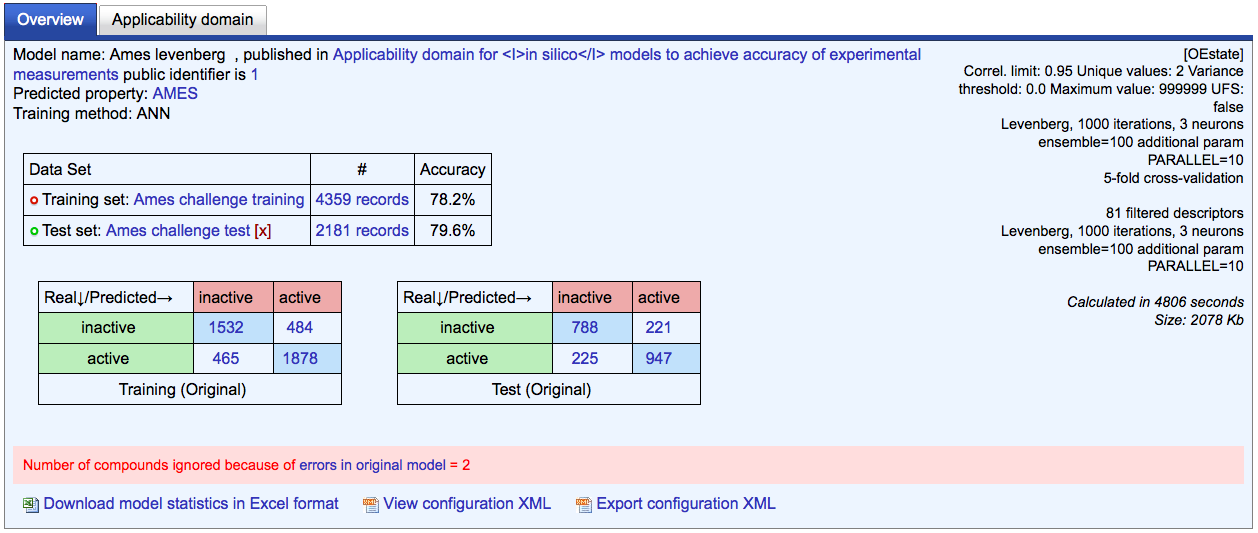
OCHEM - Our platform for the creation of in silico ADME / Tox prediction models
About OCHEM
OCHEM is a platform for medicinal chemists, toxicologists and chemical informatics.
Using OCHEM, highly precise models for substance properties - quantitative struture-activity and structure-activity models (QSPR / QSAR) can be efficiently generated.
It is a comprehensive software suite that provides an integration of multiple software components into a highly complex product.
The platform is an evolution of the Virtual Computational Chemistry Laboratory (VCCLAB).
The VCCLAB website is visited by more than 5,000 unique visitors per month and performs more than 136,000 analyses per year.
Case studies
Our software tools have demonstrated high prediction ability in a number of studies including prediction of complexation constants (Tetko et al, 2006), melting points (Varnek et al, 2007), toxicity (Zhu et al, 2008), multiple properties predictions (Varnek et al, 2009), mutagenicity according to the AMES test (Sushko et al, 2010), CYP450 inhibition (Novotarskii et al, 2010) as well as for accurate estimation of the applicability domain of models (Tetko et al, 2009).More about OCHEM
Experimental Data
The OCHEM package offers a database of molecules and their ADMET properties. The unique structure and advanced features of our database allow the storage of data with their respective references; storage and automatic conversion of units of measurement; data upload from various formats (Excel and SDF formats); editing functions for single molecules and a set of molecules simultaneously; storage of information on experimental conditions associated with experimental data; restricted and public access to data; track-changes options to visualize data changes by individual users; assignment of different user privileges; automatic verification of molecule names; storage of both biological and physico-chemical molecule properties; user options to define new properties, units, and experimental conditions.
Models
OCHEM also offers a database of models. This comprises linear and non-linear methods for model development, and estimation of their prediction accuracy. A strong focus on the confidence of calculated predictions, estimation of the applicability domain of models and data integration, e.g. development of models for several properties simultaneously, constitutes the main feature of this package.In addition, the biological models will estimate important biological ADMET properties, such as intestinal absorption, blood-brain barrier penetration, skin permeation rate as well as different biological activities introduced by the users. A possibility to build localized models using the "self-learning" feature, and estimations of their applicability domain will be an attractive marketing feature of our software. The database contains models developed by our team, as well as those contributed by scientists using our public version of this tool.
By incorporating models developed by other scientists, OCHEM represents a reference system for model comparisons. Web users as well as companies have the possibility to compare their approaches with previously published ones.
The use of the property-based similarities function provides a new similarity metric useful in compound selection, particularly for high and middle throughput screening (HTS/MTS) strategies. The program determines regions of chemical space with low confidence of predictions, which may lead to improper conclusions about the druglikeness of compounds. This tool is particularly useful to analyze (virtual) chemical libraries.
We do also offer such in silico analysis as a Service .
Snapshots






Meet OCHEM
Presentations
- OCHEM presentation at ChemAxon User Group Meeting 2011 (English)
- Introduction to the OCHEM (English)
- Baskets - organizing the data (English)
- The modeling framework (English)
- Use case: How can I get with the help of OCHEM information about the result of AMES test? Example: Captopril (German)
Versions
OCHEM Academia
OCHEM Academia is a public, freely accessible online version for academic users.
OCHEM Lite
OCHEM Lite is a standalone version. Our standard is based on a 27''iMac, which is operated under Ubuntu. We deliver a fully installed server including one days service for introduction and integration into your IT environment.
OCHEM Flex
The configurable OCHEM standard version. We install OCHEM on one of your servers or provide you with a fully installed server. Do you own a computer cluster or a proven 3D-optimization process? We integrate OCHEM for you into your existing computer infrastructure. You decide on the maximum size of the computing cluster - and you can adjust it as needed anytime within minutes. We provide service for two days, including introduction and integration into your IT environment.
OCHEM Enterprise
The OCHEM Enterprise Edition is our version for large companies. This package comes without any restrictions. The version includes a complete month of installation support by an eADMET engineer plus all other necessary work to ensure a company-wide implementation and integration into the existing infrastructure.
Upcoming extension : "EcoTox-Assess & Report" package
The "EcoTox-Assess & Report" will complement OCHEM for the assessment of ecotoxicological effects of small chemicals, and will incorporate models to predict environmental end-points of molecules required by REACH. REACH is the new European chemicals legislation. The REACH Regulation was adopted on 30 December 2006 in the Official Journal of the European Union No L 396, published as Regulation (EC) No 1907/2006 and replaces several existing statutory provisions.
Within the "EcoTox Assess & Report" Packages we are, among others, developing models for- Physicochemical Properties: Melting and boiling point, Vapor pressure, Kow, Koc and Aqueous Solubility (S)
- Environmental Fate: Biodegradation, Hydrolysis, Photolysis, Atmospheric oxidation and Bioaccumulation*
- Ecological Effects: Aquatic toxicity: acute and long-term for fish, daphnia, algae
- Sediment toxicity: acute and long-term
- Terrestrial effects: acute and long-term
- Das Marie Curie initial training network “Environmental Chemoinformatics” (ECO), which is coordinated by eADMETs CSO, Dr. I.V. Tetko
- Case studies on the Development and Application of in-Silico Techniques for Environmental hazard and Risk assessment (CADASTER)
Upcoming extension : Our toxicity prediction package iPRIOR
iPRIOR will predict in vivo toxicities of compounds by analyzing their interactions with toxicological pathways in in vitro experiments and integrating data about their experimental and/or predicted physico-chemical (e.g., solubility, lipophilicity, dissociation state) and biological properties (e.g., bioavailability, metabolic stability).
The research activities are conducted in the context of the BMBF research program "GO-Bio".
